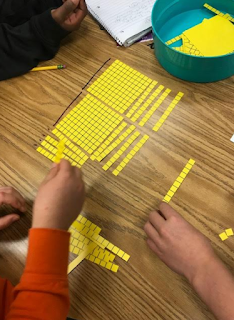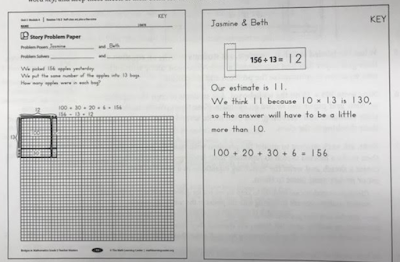The Randall Spelling Bee will be held on Thursday, January 9th at 1:30 p.m. The week before break we will be doing spelling bee rounds in our classrooms to determine who our representative and alternate will be. We will do five spelling bee rounds with the 1st, 2nd and 3rd place finishers earning points for each round. All students will have an opportunity to participate. Scoring will be as follows:
1st place = 5 points
2nd place = 3 points
3rd place = 1 point
After the five practice rounds the student with the most points will be our representative. The student with the second most points will be our alternate.
Have fun and good luck!
Friday, December 13, 2019
Writing
Our writing goal this quarter is to write Non-Fiction pieces. Our "I Can" statements include: I can write informative/explanatory tests to examine a topic and convey ideas and information clearly.
We will get to that goal by working on how to organize our writing, so our first lessons were on how to write complete and organized paragraphs. We learned about the three parts to a paragraph, the topic sentences, the detail sentences, and the concluding sentence. The following shows the process we went through to plan and draft our non-fiction writing. Students will be using these rough drafts to produce a picture book page about a chosen animal, that will all be combined to make a class book on animals. Pages will include not just their paragraphs but could also have illustrations, diagrams, maps, charts/graphs, glossary, titles/subtitles etc, which are often found within non-fiction text.
We will get to that goal by working on how to organize our writing, so our first lessons were on how to write complete and organized paragraphs. We learned about the three parts to a paragraph, the topic sentences, the detail sentences, and the concluding sentence. The following shows the process we went through to plan and draft our non-fiction writing. Students will be using these rough drafts to produce a picture book page about a chosen animal, that will all be combined to make a class book on animals. Pages will include not just their paragraphs but could also have illustrations, diagrams, maps, charts/graphs, glossary, titles/subtitles etc, which are often found within non-fiction text.
Bridges: Dividing using Place Value
Bridges: Division using Place Value
Students have been working this week on division of whole numbers using place value models, and base ten grid paper. This is a very new and complicated strategy, but we feel like after a few days students really started getting it. Here are some examples from the text, as well as some student work. Ask your child to explain how they used the base ten models.
Reading
We have finished up our Shared Reading experience with Number the Stars. They really loved the story, and I hope your child shared with you about it at home. If they haven't please ask them. It's a very moving story, and we spent time discussing how an author develops theme in the story. We explored how this author uses suspense, visualization, and character development to tell the story, and catch the reader. At the end of EVERY chapter, they were hungry for more.
We also discussed a lot of non-ficiton information about the Holocaust and read great picture books about many experiences of those who went through this terrible time in history. We also learned a lot about how the Danish people became real allies to their Jewish neighbors, and saved 90% of their Jewish population. Here is a link to a great non-fiction piece we shared with the students as part of our learning. Also here are some links to the great books we used to help us synthesize our learning and understanding.
https://www.history.com/news/wwii-danish-jews-survival-holocaust
https://www.goodreads.com/book/show/273794.The_Yellow_Star
http://www.ruthvanderzee.com/erikas-story, https://www.publishersweekly.com/978-1-56846-176-2
https://www.publishersweekly.com/978-0-439-43540-6, https://www.youtube.com/watch?v=SWHjMhutlws&disable_polymer=true
https://www.publishersweekly.com/978-0-15-202306-5
Next week students will work on a final project to show their understanding of the story and it's many themes.
After break we will work on non-fiction texts, with a focus o main ideas and details that support.
We also discussed a lot of non-ficiton information about the Holocaust and read great picture books about many experiences of those who went through this terrible time in history. We also learned a lot about how the Danish people became real allies to their Jewish neighbors, and saved 90% of their Jewish population. Here is a link to a great non-fiction piece we shared with the students as part of our learning. Also here are some links to the great books we used to help us synthesize our learning and understanding.
https://www.history.com/news/wwii-danish-jews-survival-holocaust
https://www.goodreads.com/book/show/273794.The_Yellow_Star
http://www.ruthvanderzee.com/erikas-story, https://www.publishersweekly.com/978-1-56846-176-2
https://www.publishersweekly.com/978-0-439-43540-6, https://www.youtube.com/watch?v=SWHjMhutlws&disable_polymer=true
https://www.publishersweekly.com/978-0-15-202306-5
Next week students will work on a final project to show their understanding of the story and it's many themes.
After break we will work on non-fiction texts, with a focus o main ideas and details that support.
Science
We have started a new science unit - Mixtures and Solutions. In this unit students will experiment with a variety of materials to see how they combine together. Throughout the unit we are also focusing on making detailed observations, keeping organized notes, making predictions and recording our outcomes. We began by combing a variety of fruits to make our first mixture!
We followed this up by experimenting to see if combining gravel, salt and diatomaceous earth with water would also create a mixture. We then discussed whether or not mixtures can be separated, and if so how. We used filters and evaporation as methods of separating mixtures. We have discussed and defined both mixtures and solutions. Every solution is a mixture, but not all mixtures are solutions. Ask your child an example of a mixture and a solution.
We explored the process of saturation, using both salt water solution and citric acid. We weighed our 50 mL of water before we added the materials, and then after to see how much salt or CA it would take to saturate the water.
We will also explore chemical reactions.
Monday, December 2, 2019
Hot Lunch Menu Going Green!
Starting this month the MMSD hot lunch menu will no longer be available in printed form. Here is the link to the menu site, which will change each month to reflect the new month's menu.
MMSDMenu
MMSDMenu
Subscribe to:
Comments (Atom)


















